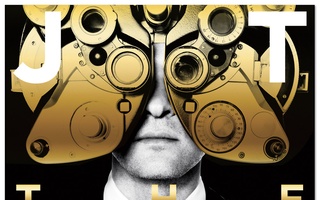Around 1798, Jane Austen wrote her first novel, “Northanger Abbey,” a witty parody of Gothic novels. By making the heroine an avid Gothic novel reader who imagines murder and conspiracy out of the most trivial occurrence, Austen pokes fun at the clichés and stereotypes everywhere in Gothic novels. To some extent, “Fifty Shades of Grey” resembles “Northanger Abbey” in this respect. Inspired by “Twilight,” this age’s counterpart to Gothic novels, it is full of childish lines, absurd character development, and stereotypical plots, all put in a somewhat bizarre context. All that prevents it from being a great parody is that it is not actually a parody, and the incredible stupidity of the film is not intentional.
The story starts when the undistinguished, middle-class heroine Anastasia Steele (Dakota Johnson) meets the ridiculously handsome, young millionaire Christian Grey (Jamie Dornan). Sure enough, the millionaire is immediately attracted to the average girl for no apparent reason, and the two quickly begin an erotic affair—until Ana finds out that Christian is obsessed with BDSM. From this point on, the plot plunges into a horribly boring loop. First, Ana is troubled by the unusual relationship of abuse and subordination Christian asks from her. However, she cannot help being attracted to Christian due to his urbanity, appearance, and occasionally to his dominance. Finally she becomes eager to experiment in BDSM with him. After this, however, she realizes once more that she cannot handle this relationship, and everything starts over again. The loop repeats with little variation six or seven times over the course of the 125 minute movie, as if the director is enamored of the ingenious originality of this plot. The film finally ends with a foreshadowing of a sequel, leading audiences to be horribly afraid that this sequel will be made up with another seven repetitions of this loop.
It might be a little unfair to say that the plot comprises only unvaried loops, because sometimes the screenwriter does endeavor to add more elements of the depth in the characters, such as showing the hero play sad piano music in a luxurious apartment by the moonlight (another stroke of plot-writing genius) or showing the heroine standing in Christian’s private garage and asking “Which one is yours?” All these items are surpassed by the moment when Christian looks thoughtfully out of the window and sighs in a melancholy tone: “I’m fifty shades of fucked-up.”
All that said, “Fifty Shades of Grey” is actually not without merit. Above all, it has one of the most ear-catching soundtracks of the last few years, which perfectly features a remix of Beyoncé’s “Crazy in Love” in the climactic sex scene. The cinematography is delicate and often expressive. When audiences are first introduced to Christian’s “playroom,” for instance, the contrast between the darkness of the huge room and the sensually red ropes in the corner reflects both Ana’s desire and her fear. There is some chemistry between the main characters, and, surprisingly, Dakota Johnson actually acts. Her giggles, flushes, and lust seem very genuine; this genuineness, compared with the acting of Kristen Stewart in “Twilight,” is a real feat for a movie of this type.
If “Fifty Shades of Grey” were only half its current length, it might actually be a decent laugh for people who are good at entertaining themselves. Unfortunately, the film as it is right now is for the most part two hours of boredom with unbelievable characters and a repetitive, predictable plot. More painful than anything that the characters have done in this film is the thought that it is only the first movie of a trilogy.
—Staff writer Tianxing V. Lan can be reached at tianxinglan@college.harvard.edu
Read more in Arts
Artist Spotlight: Alia AliRecommended Articles
-
 Part Two of "20/20" Is A Bleary Follow-Up
Part Two of "20/20" Is A Bleary Follow-Up -
UnapologeticsChristianity is not trapped in the past. To many apparently sane modern people, the ancient faith remains as fresh as ever.
-
Undercutting the Power of 'Fifty Shades'“Fifty Shades of Grey” is an inane, stupidly constructed movie, but people are seeing it and therefore giving it power. And we should stop while we can, because no one—male or female—wins here.













